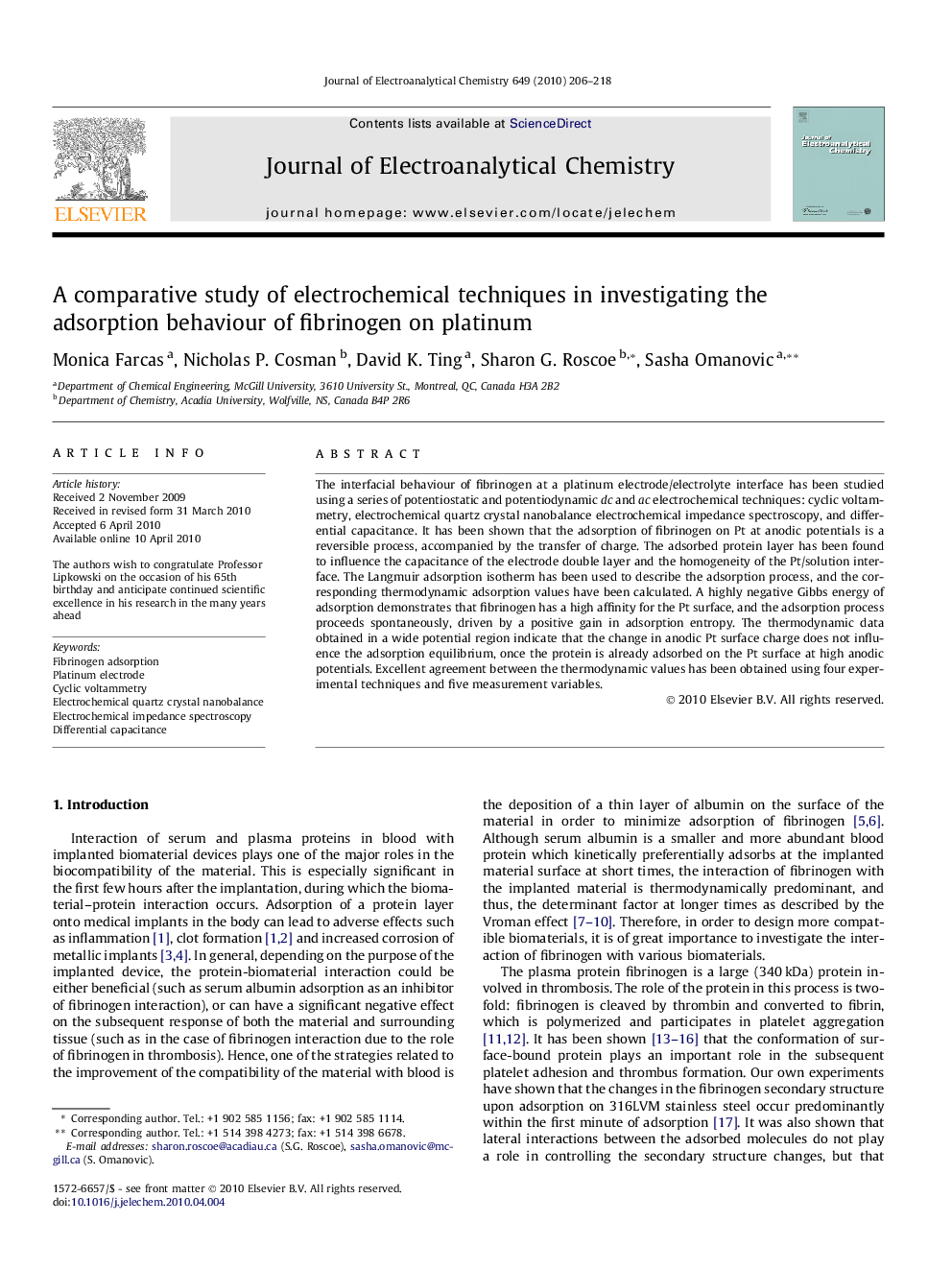| Article ID | Journal | Published Year | Pages | File Type |
|---|---|---|---|---|
| 219742 | Journal of Electroanalytical Chemistry | 2010 | 13 Pages |
The interfacial behaviour of fibrinogen at a platinum electrode/electrolyte interface has been studied using a series of potentiostatic and potentiodynamic dc and ac electrochemical techniques: cyclic voltammetry, electrochemical quartz crystal nanobalance electrochemical impedance spectroscopy, and differential capacitance. It has been shown that the adsorption of fibrinogen on Pt at anodic potentials is a reversible process, accompanied by the transfer of charge. The adsorbed protein layer has been found to influence the capacitance of the electrode double layer and the homogeneity of the Pt/solution interface. The Langmuir adsorption isotherm has been used to describe the adsorption process, and the corresponding thermodynamic adsorption values have been calculated. A highly negative Gibbs energy of adsorption demonstrates that fibrinogen has a high affinity for the Pt surface, and the adsorption process proceeds spontaneously, driven by a positive gain in adsorption entropy. The thermodynamic data obtained in a wide potential region indicate that the change in anodic Pt surface charge does not influence the adsorption equilibrium, once the protein is already adsorbed on the Pt surface at high anodic potentials. Excellent agreement between the thermodynamic values has been obtained using four experimental techniques and five measurement variables.
